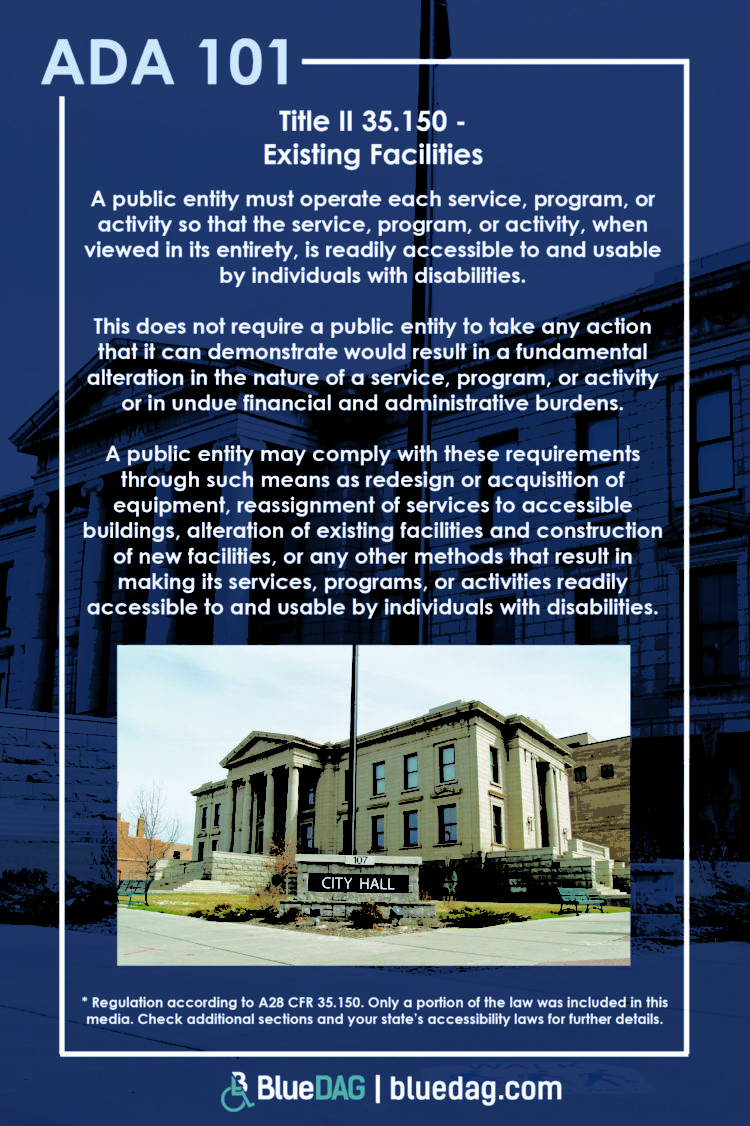 ADA Title II 35.150 – Existing Facilities
ADA Title II 35.150 – Existing Facilities
A public entity must operate each service, program, or activity so that the service, program, or activity, when viewed in its entirety, is readily accessible to and usable by individuals with disabilities.
This does not require a public entity to take any action that it can demonstrate would result in a fundamental alteration in the nature of a service, program, or activity or in undue financial and administrative burdens.
A public entity may comply with these requirements through such means as redesign or acquisition of equipment, reassignment of services to accessible buildings, alteration of existing facilities and construction of new facilities, or any other methods that result in making its services, programs, or activities readily accessible to and usable by individuals with disabilities.
* Regulation according to 28 CFR 35.150. Only a portion of the law was included in this media. Check additional sections and your state’s accessibility laws for further details.
